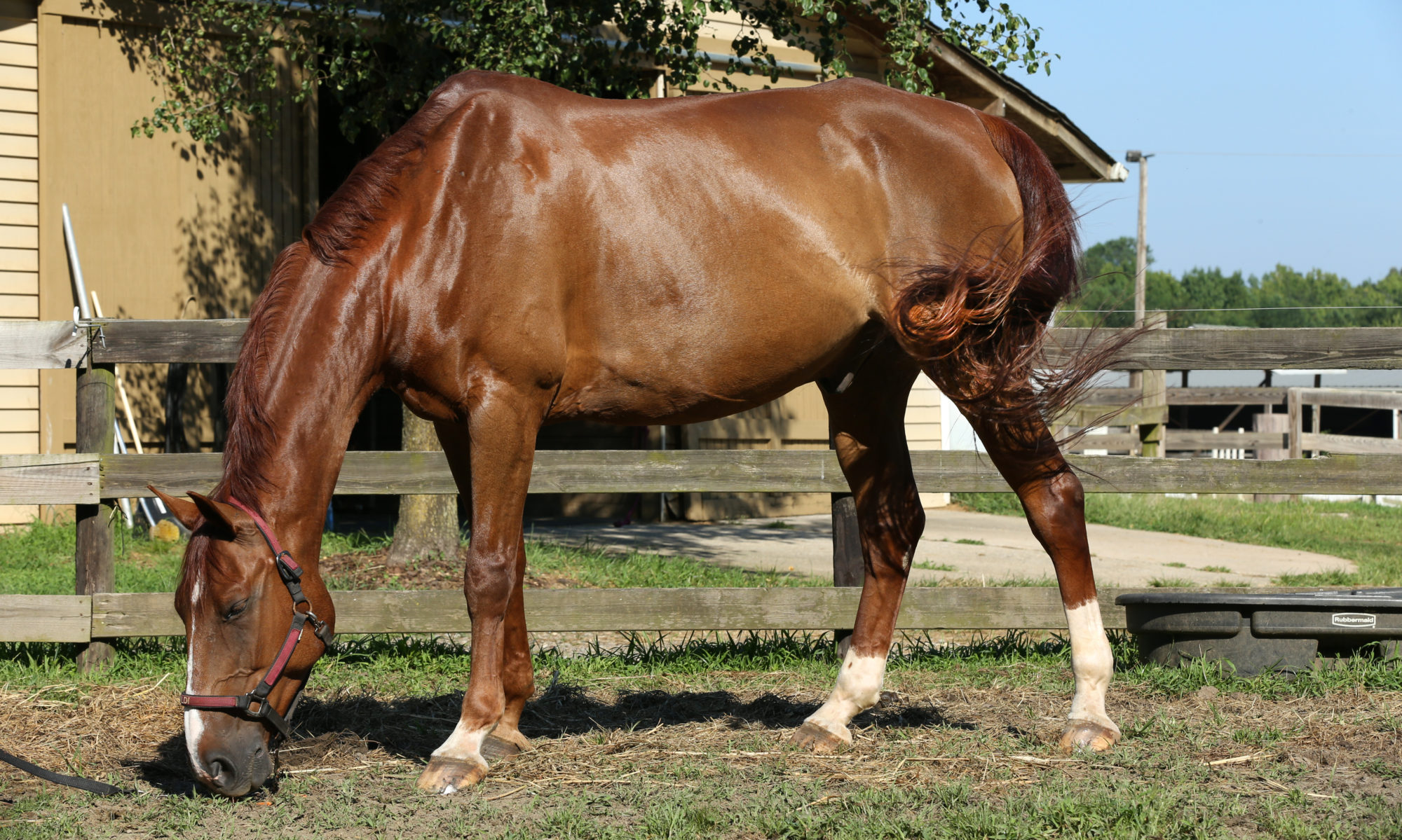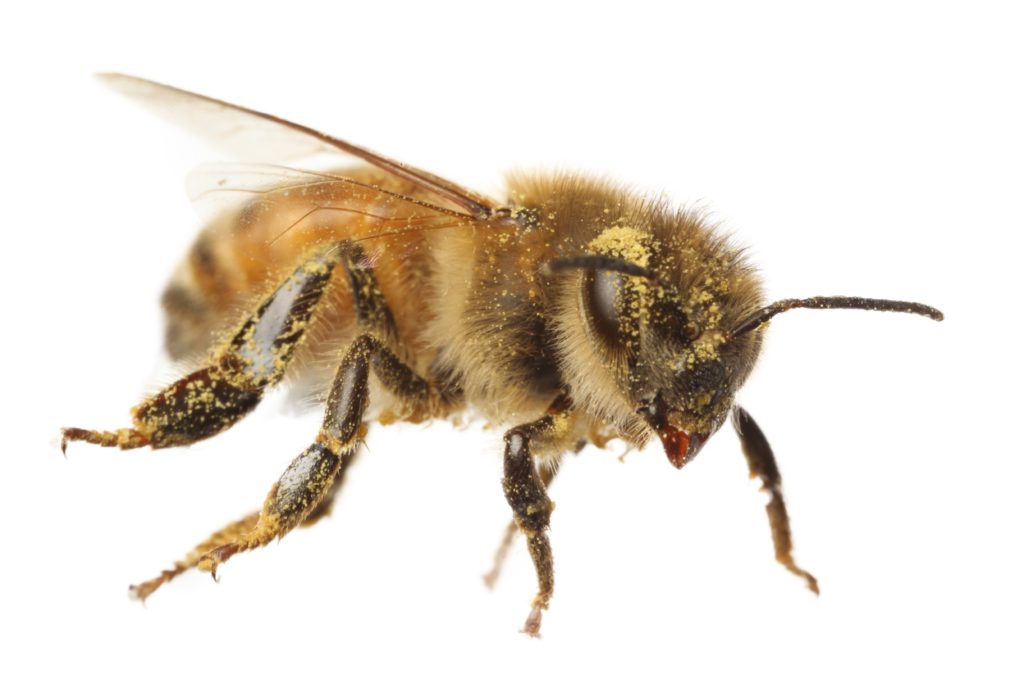
You probably are aware of lots of animals that are covered in hair – dogs, cats, rabbits, squirrels – the list goes on. But I bet you didn’t know that honeybee are also covered in hair, over 3 million hairs to be exact! Why are these insects so hairy?
That is just the question David Hu, Guillermo Amador and I answered in our study on honey bee grooming, published in Bioinspiration & Biomimetics. The honey bee’s body is covered on almost every square millimeter by hair, including on its eyes. The hairs on different parts of the body are all different shapes and sizes because they are all meant to perform a specific task. For example, we found that the hairs covering the eyes of a bee are spaced at a distance about the same size as the pollen they collect. When pollen collects on the eye, it gets wedged in between the hairs and is suspended above the eye’s surface. When we covered the eye with cornstarch, which is much smaller than pollen, the powder was able to collect on the surface of the eye and the bee was unable to groom the particles away with their front limbs like they were with the pollen.
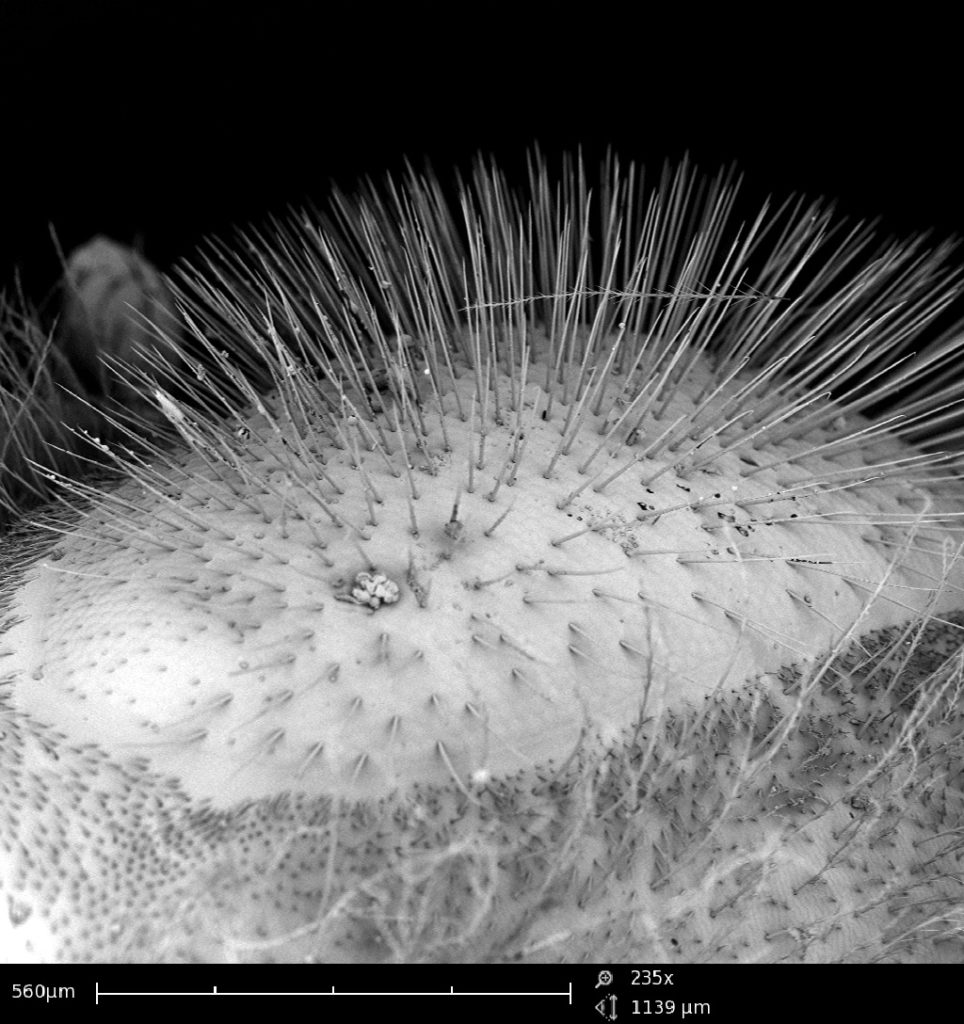
A honey bee trying to groom cornstarch
A honey bee grooming pollen
So how effective is a bee at grooming itself? To find out, we tethered pollen-covered bees to a wire and suspended them above a glass dish. We set up cameras to film from the side and from below. From the side view, we counted the number of grooming movements the bee performed, as you can see in the above video. From the bottom view, we used a computer program to count the number of pollen particles that accumulated on the glass dish over time.
We used three different types of pollen in these experiments: commercial pollen that you can buy at a health food store, fresh dandelion pollen, and “washed” dandelion pollen. The “washed” pollen has had the pollenkitt – a sticky fluid that covers the surface of many types of pollen grains – removed. This pollen just would not stick to the bee at all. In the end, we could only get half as much washed pollen to stick to a bee as the fresh pollen.
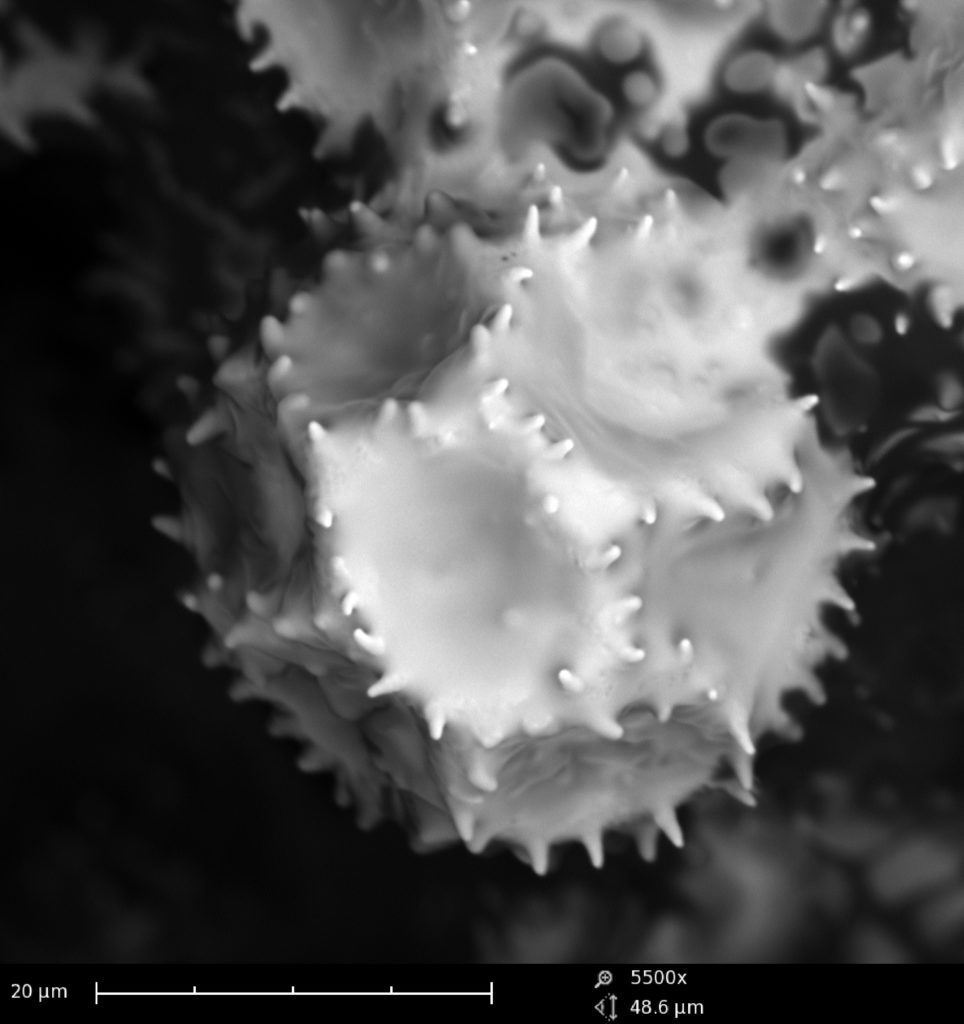
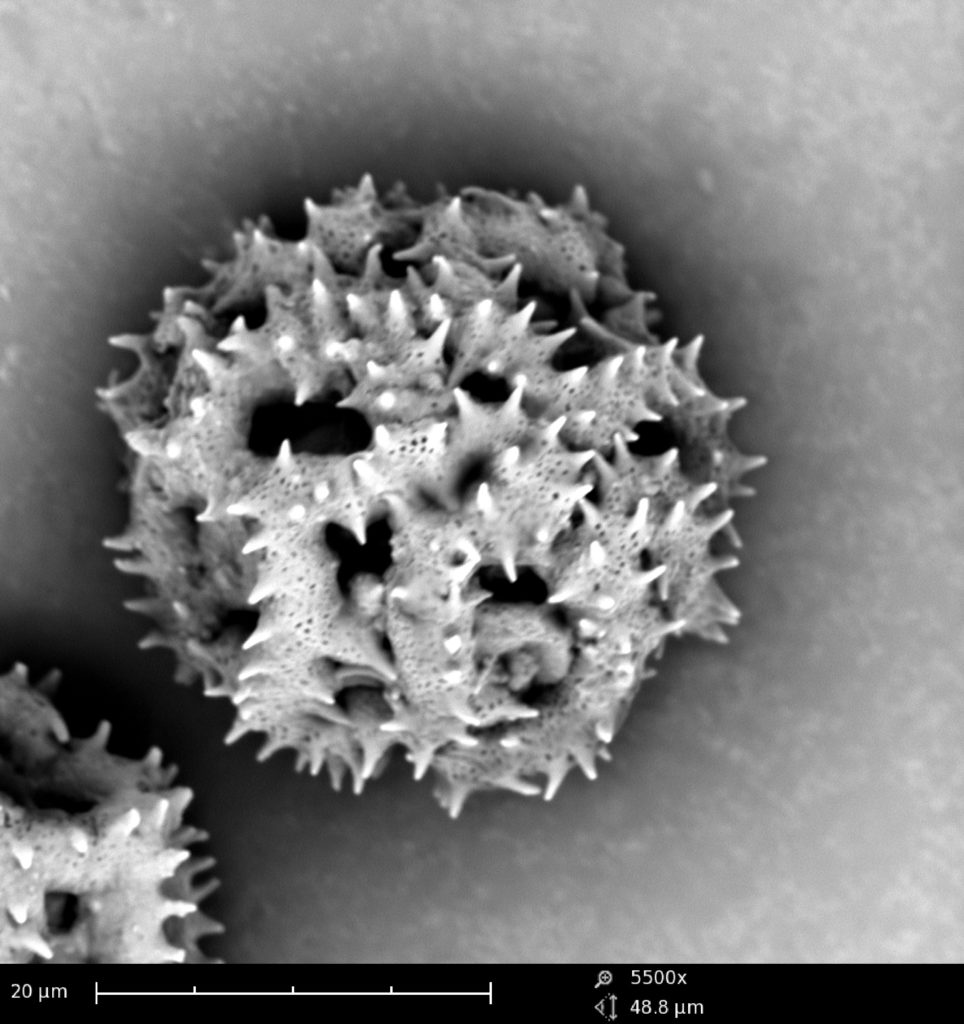
We found that the bee removes most of the pollen within the first minute of grooming with 10 -20 grooming movements. So we know the bees are very good at grooming away pollen particles very quickly, but how do they do this? It turns out it’s all to do with those millions of hairs.
We devised another experiment to determine how important the hairs on the bee’s legs are for grooming. We covered the head of a dead bee in pollen and attached the forelimb of that bee to a motor – making a robo-bee of sorts! We used a microscope to set the limb a consistent distance away from the surface of the eye, and had the motor brush up and down the eye 5 times. We took photos of the eye in between each swipe of the limb and used a computer program to count the amount of yellow pixels in each photograph.
We repeated this experiment with a hairy forelimb and with a forelimb covered in wax, effectively eliminating the hairs. The smooth, hairless limb was not able to remove much pollen at all. The hairy limb removes 4 times more pollen in the first swipe than the smooth limb.
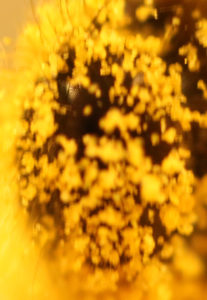
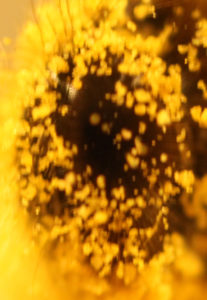

The hairs covering the body of a honey bee are essential for it to remove particles from it’s body. Understanding how the geometry of the hairs affects the bee’s ability to remove pollen could help influence designs for smart, self-cleaning surfaces on things like solar panels and microchips. It could also be used to design efficient artificial pollinators.
